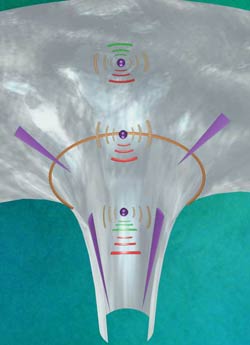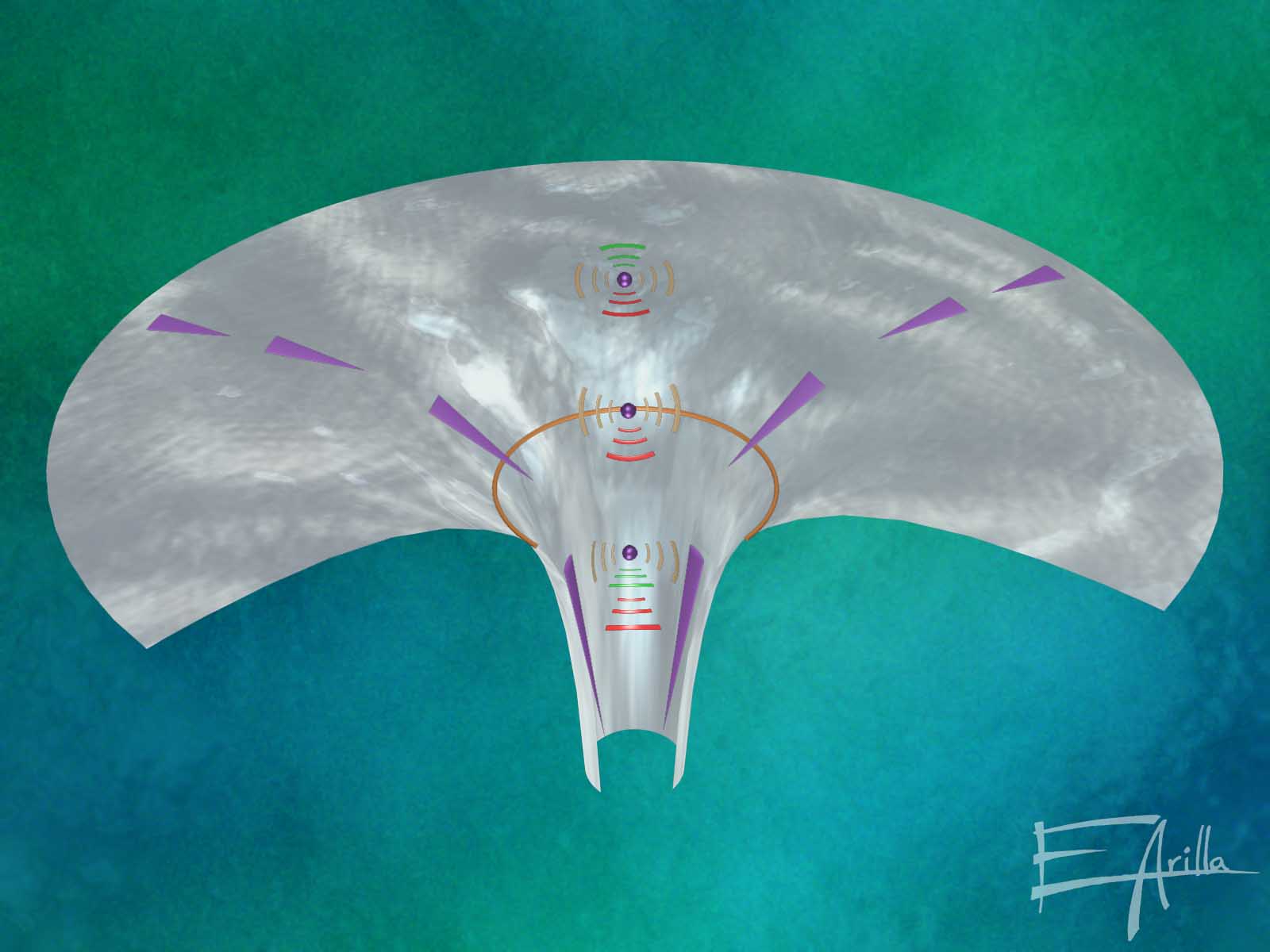Black Holes that Don’t Trap
Three decades ago Stephen Hawking discovered that black holes can emit radiation, so they aren’t really black. Now it seems that they may not necessarily be holes. Theorists reporting in the 27 October PRL studied the Hawking-like sound waves radiating from a black hole “analogue”–a fluid flow in which the downstream current acts like a gravitational pull and which is governed by black-hole-like equations. Surprisingly, the Hawking waves appeared in the fluid even without the inescapable region normally associated with black holes. The results suggest that experimenters may have less trouble than expected creating Hawking radiation analogues in the lab. The team speculates that real black holes might also exist in such a state, but other experts are skeptical.
The “point of no return” for anything venturing near a black hole is called the event horizon–nothing leaves once it crosses this imaginary spherical shell surrounding the hole. Hawking realized, however, that the warped spacetime on the cusp of the event horizon would stimulate the creation of particles, some having enough energy to break free of the gravitational hold.
Unfortunately, the predicted radiation from real black holes is too feeble to detect. Some researchers have therefore tried to indirectly verify the theory with analogue black holes–solid or liquid systems that trap sound or light in a way similar to real black holes. One example is a quantum fluid like liquid helium with some portion moving faster than the speed of sound. A swimmer in this supersonic region could cry out for help, but the sound waves would never escape to the stationary region. The equations describing such a sound trap are similar to those for a black hole’s funnel-shaped spacetime. Theoretical studies of acoustic event horizons predict that they should emit Hawking-like radiation from the edge of the supersonic region in the form of quantized sound waves called phonons.
Researchers would like to observe this analogue Hawking radiation in the lab in order to learn more about this exotic phenomenon. But no one has succeeded so far, in part because the instabilities and turbulence associated with a supersonic flow make such measurements difficult. But it turns out that supersonic flows shouldn’t be necessary for generating Hawking radiation, according to the predictions of Carlos Barceló, of the Astrophysics Institute of Andalucía in Granada, Spain, and his colleagues.
The team modeled a frictionless fluid flowing down a narrow pipe. They imagined first that the flow speed accelerated with distance down the pipe (perhaps because of a decrease in diameter) and second that the maximum velocity increased with time. If the downstream flow reached sound speed, they calculated that an upstream observer would hear a Hawking-like hum. However, the team discovered that they could slowly turn up the velocity–getting close to but never quite reaching supersonic speeds–and yet the same phonon radiation came out. “It was surprising. I was expecting to see no radiation,” says co-author Stefano Liberati of the International School of Advanced Studies in Trieste, Italy.
The researchers speculate that a collapsing star could emit Hawking radiation without ever forming an event horizon. From a distance, it would still look like a black hole as long as it kept collapsing, because light would be strongly affected by the severely warped spacetime. But William Unruh of the University of British Columbia in Vancouver thinks this scenario is unrealistic. To emit the expected amount of radiation, he says, the star would have to shrink very close to the compactness needed for an event horizon to form, so close that the difference would not be physically meaningful.
–Michael Schirber
Michael Schirber is a Corresponding Editor for Physics Magazine based in Lyon, France.





